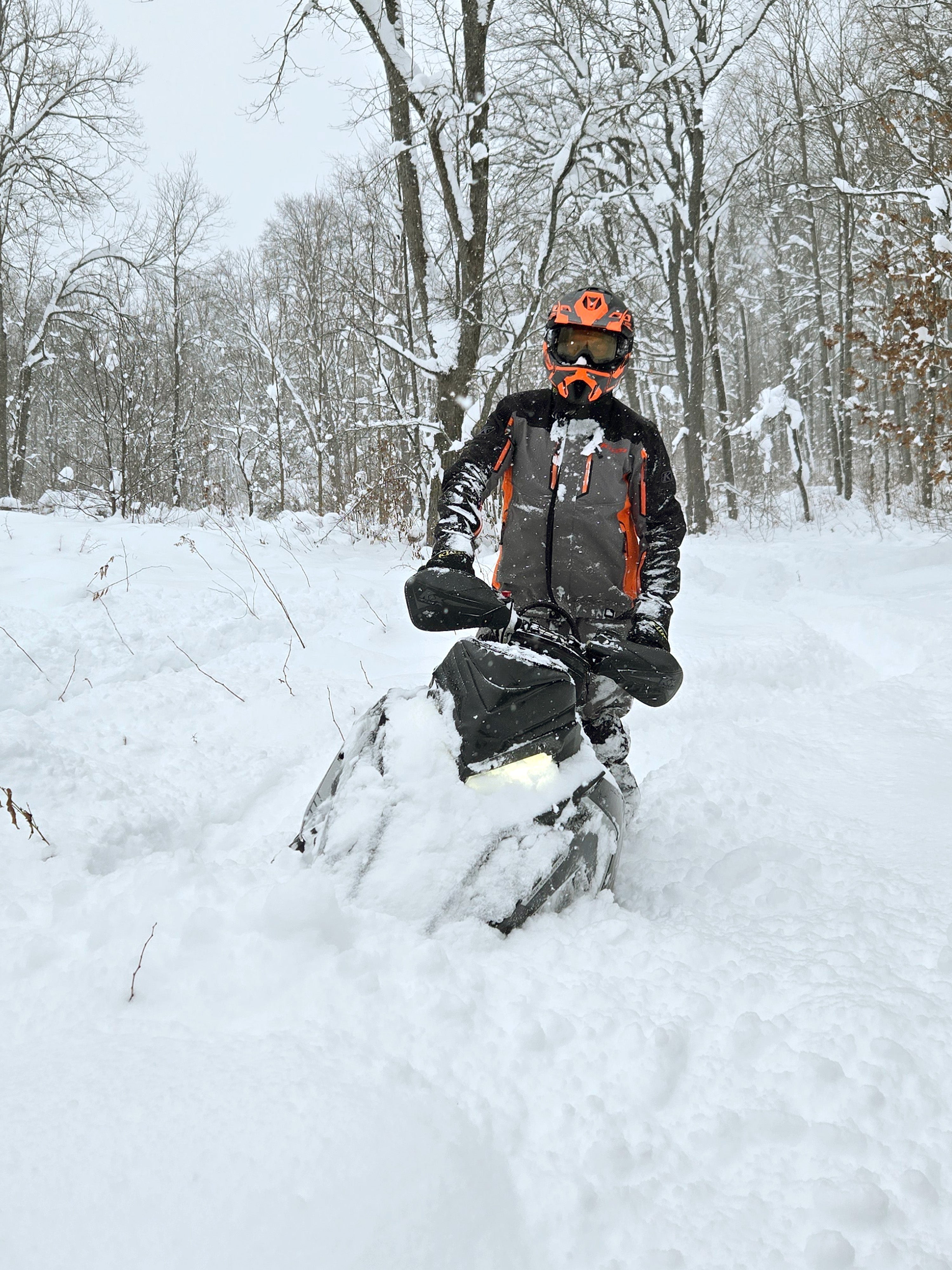There are many brands on the market today at various price points. What you need to know is that you truly get what you pay for. Personally, we ride in Klim as it's the most versatile and durable product we've seen going on 20 years.
What to Look for When Buying
When selecting gear, focus on these key characteristics:
- Waterproof: Most snowmobile gear is waterproof, but each company achieves this through different methods.
- Breathability: This is just as important as being waterproof; your sweat needs to escape.
- Durability: This is extremely important, especially if you are a backcountry rider who abuses gear.
Common performance fabrics used in today's gear to achieve this are:
- Gore-Tex: Started in 1969
- Sympatex: Started in 1986
- 509 5Tech: 2016 (first year used)
- FXR HydrX35: 2019 (hard to pinpoint the exact time)
- Castle Tri Laminate: Unknown
Waterproof and Breathability
This should be obvious—you want to stay dry on the outside and dry on the inside. Some of these fabrics are more breathable and waterproof than others, but ultimately, they will all do the same thing, just some better than others.
Gore-Tex and Sympatex have been around the longest and, in my opinion, are superior products. I was once told that Gore-Tex is a living fabric; it's constantly evolving as technology advances. Perfection comes with experience, and both of these companies have stood the test of time.
Durability
Outerwear materials come in two types: nylon or polyester. Polyester is softer and usually more comfortable but not as durable as nylon. Depending on how you ride, this durability may or may not be a concern. Backcountry and mountain riders abuse their gear and need tough stuff, whereas a trail rider isn't encountering things that could tear open a garment.
Layering
Although it's not part of the actual outerwear, layering is just as important and needs to be mentioned. If you wear items that absorb your perspiration, the outerwear won't matter. Moisture equals cold, and the goal is to not get wet from either direction.
- Base Layer (or Compression Layer): This should fit snug to the skin and be made of synthetic materials. This pulls your sweat away from your body and allows it to transfer to the next stage.
- Mid-Layer (Insulation): These are typically a fleece-type material and are considered your insulation layer, again synthetic (not cotton). This allows the perspiration from your skin to pass through to the outer shell.
Insulated jackets are filled with synthetic material, such as 3M Thinsulate, which performs the same as a mid-layer and in some cases replaces your mid-layer, depending on how warm you want to be.
Under no circumstances should you wear anything cotton anywhere on your body if you want to be warm. Cotton absorbs moisture and takes forever to dry, which means you will get cold. Synthetic garments dry quickly, allowing you to stay warmer.
Our Take
I’ve ridden in all types of gear, from OEM to Klim, and I can tell the difference between all of them. Even a piece of insulated gear I bought for trail riding had its downfalls, which led me back to Klim.
This may sound like a sales pitch for Klim, and yes, it’s what we sell, but based on our experience, it’s truly the best. Their warranty works, it takes a lot of abuse, with the proper layering you stay dry, and the features built into their gear make them versatile. In the end, it’s like most things in life: you get what you pay for.
